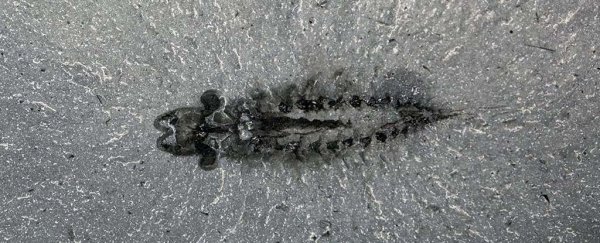Perched at over 1,500 meters above sea level, it is difficult to imagine a time when the mountainside Walcott Quarry in Canada – the first excavation site within the Burgess Shale – was submerged by ocean. And yet, that's why it has become one of the world's most famous and unique fossil sites.
508 million years ago, thousands of bizarre creatures were killed instantly by a sudden underwater mudslide that would become the Burgess Shale, creating a time capsule for scientists to peer into the middle Cambrian period.
At this time, the ocean waters were warm and bursting with new forms of life, and an order of animals called radiodonts thrived off their ability to swim and hunt prey. Radiodonts share a common ancestor with modern arthropod animals like insects, arachnids, and crustaceans, and is one of the iconic Cambrian creatures discovered within the Burgess Shale.
And yet, the quantity of fossils from the site is so enormous, it has taken scientists over two decades to properly document the most complete specimens of a radiodont ever seen.
Radiodont fossils are rare, and often fragmented, which has led to scientific feuds over how they are interpreted. But new research – in which scientists analyzed a cache of 268 specimens of Stanleycaris hirpex that have been sitting in the Royal Ontario Museum's collection for over two decades – has begun to put the pieces of radiodont evolution back together.
Some of the specimens in the study were preserved whole, which offered the researchers a complete view of their body plan.
Stanleycaris is the smallest of all known radiodonts: their bodies in the fossil record range from 10–83 millimeters in length.
And yet, these specimens offered a never-before-seen look at the brain of Stanleycaris, which in 84 of the fossils was preserved with "astonishing quality".
"We can even make out fine details such as visual processing centers serving the large eyes and traces of nerves entering the appendages," lead author Joseph Moysiuk said.
Moysiuk, an ecology and evolutionary biology PhD candidate at the University of Toronto, said the details were so clear it was "as if we were looking at an animal that died yesterday".
The fossils revealed two brain segments: a protocerebrum (a section linked to the compound eyes in modern arthropods) and a deutocerebrum (which, in living arthropods, controls nerves in the antennae and has a role in their version of 'smell'). In Stanleycaris, these segments are connected to the eyes and frontal claws, respectively.
The scientists believe Stanleycaris's fossilized brain gives evidence for early differentiation between the head and trunk segments in arthropods.
"We conclude that a two-segmented head and brain has deep roots in the arthropod lineage and that its evolution likely preceded the three-segmented brain that characterizes all living members of this diverse animal phylum," said Moysiuk.
This third arthropod brain segment, the tritocerebrum, which could generally be associated with arthropod mouthparts and the front end of the animal's digestive system, was absent in Stanleycaris.
 Reconstruction of S. hirpex swimming above fossil specimen. (Sabrina Cappelli © Royal Ontario Museum)
Reconstruction of S. hirpex swimming above fossil specimen. (Sabrina Cappelli © Royal Ontario Museum)
But what Stanleycaris might've lacked in brains, it more than made up for in eyes.
"The presence of a huge third eye in Stanleycaris was unexpected," said Jean-Bernard Caron, Moysiuk's PhD supervisor and co-author on the paper.
This feature, never before noticed in a radiodont, led the researchers to re-evaluate other Cambrian panarthropods, where they found evidence for similar median eyes.
Their discovery supports the theory that median eyes are part of the arthropod 'ground plan', along with the more familiar pair of lateral eyes that we see in creatures like crabs.
The scientists also noted the swimming flaps of radiodonts arose around the same time as these more complex eye features, which they think might have evolved to support the predator's more active lifestyle.
"These animals were even more bizarre-looking than we thought, but also shows us that the earliest arthropods had already evolved a variety of complex visual systems like many of their modern kin," Caron said.
The scientists also said radiodont specimens are uniquely positioned to provide information about the evolution of arthropods from other close living relatives, like velvet worms and tardigrades.
"These fossils are like a Rosetta Stone, helping to link traits in radiodonts and other early fossil arthropods with their counterparts in surviving groups," Moysiuk said.
This paper is published in Current Biology.
